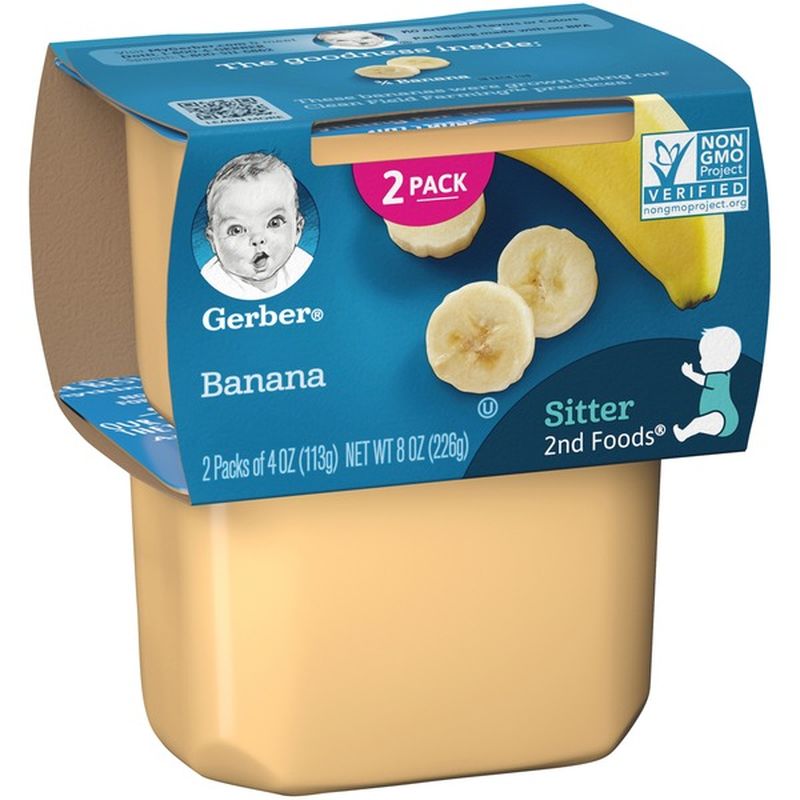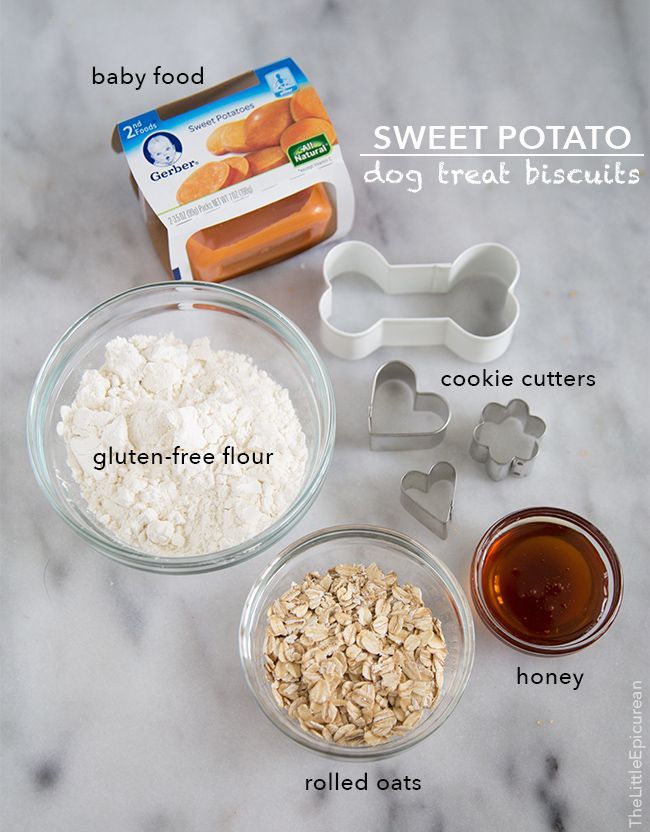Beech nut recall baby food
What You Need To Know
Overview
Two disturbing Congressional baby food safety reports were released in February and September 2021, revealing that many of the most popular brands of baby foods were selling products that were tainted with dangerously high levels of toxic heavy metals.
Among the brand names mentioned were Gerber and Beech-Nut, well known for their baby and toddler food items.
The results of these reports are concerning because even low levels of heavy metals such as arsenic, lead, mercury, and cadmium can be detrimental to babies and growing toddlers.
Exposure to these heavy metals can cause permanent damage to your child’s brain development. It may lead to IQ decrease and behavioral issues. (1)(2)
New parents, and even unsuspecting seasoned parents, have enough worries on their plates regarding their children’s well-being to have to also think about issues of food contamination such as these.
In light of these findings, it’s becoming increasingly harder to trust big-name brands and the quality of their products.
Lawmakers and parents alike are now putting pressure on the FDA (U.S. Food and Drug Administration) to introduce stricter testing policies for companies such as Beech-Nut.
One of the main changes being pressed is to require baby food manufacturers to test the finished products for heavy metals rather than testing individual components before formulations are made.
In January 2023, the FDA announced that they’re planning on putting limits on the lead content in baby food. They’re also creating a new department to focus on food safety.
Keep reading to learn more.
Which Baby Food Brands Are Toxic?
In a detailed Congressional Report on toxic products released last February 2021, the US Congress Subcommittee on Economic and Consumer Policy asked the following baby food manufacturers for the test results of products reported to have high levels of toxic heavy metals: (3)
- Beech-Nut Nutrition Company (Beech-Nut)
- Nurture, Inc.
 (HappyBABY and HappyTOT)
(HappyBABY and HappyTOT) - Hain Celestial Group, Inc. (Earth’s Best Organic)
- Gerber
- Campbell’s Plum Organics
- Walmart Inc. (Parent’s Choice)
- Sprout Foods, Inc. (Sprout Organic Foods)
Of these seven baby food companies, only Beech-Nut, Gerber, Nurture, and Hain submitted test results and internal testing policies to the Subcommittee. The rest refused to cooperate. (3)
Despite complying with the Subcommittee’s request, the four companies remained under fire. Their test results showed heavy metal levels in their ingredients and baby food products were several times the FDA’s maximum allowable levels. (3)
Instead of meeting FDA’s standards, the baby food manufacturers created their own internal standards with increased limits that make it appear as if their products passed. In reality, their results are several times higher than the FDA standards. (3)
(3)
Beech-Nut In Subcommittee Congressional Report On Toxic Baby Foods
Is Beech-Nut Baby Food Safe?
According to the first Congressional Report, Beech-Nut declared that all its raw materials passed internal standards. But the company set very high internal maximum levels, so the ingredients actually failed government regulations. (3)
Inorganic Arsenic:
- 300+ ppb in additives (used in different products)
- 913.4 ppb in raw materials
Mercury:
- The company doesn’t test products or ingredients for mercury.
Lead:
- Up to 886.9 ppb (raw materials)
Cadmium:
- Up to 344.55 ppb (raw materials)
Second Congressional Report
In September 2021, the Subcommittee submitted a follow-up report. It announced that the state of Alaska independently tested Beech-Nut baby food products and still found dangerously high levels of inorganic arsenic.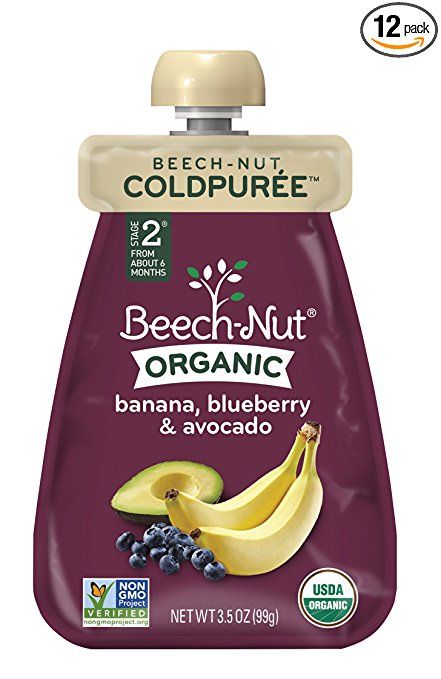 (4)
(4)
Despite Alaska’s test results, the second Congressional baby food report revealed that Beech-Nut failed to notify the public or pull all those affected products from the market. (4)
Beech-Nut Rice Cereal (product codes 103470XXXX and 093470XXXX; expiration date of May 1, 2022) were recalled on June 8, 2021. (8)
But to date, no further Beech-Nut recalls have been announced, despite at least four other products also having high levels of arsenic. (4)
Does Beech-Nut Have Heavy Metals?
The FDA sets the maximum limits in ppb (parts per billion) for infant rice cereal to 100 ppb inorganic arsenic, but the Beech-Nut rice cereals have more than this limit.
Three samples associated with the two recalled products tested by Alaska had the following inorganic arsenic levels: (4)
- Product code 103470XXXX: 125 ppb
- Product code 093470XXXX, sample 1: 122 ppb
- Product code 093470XXXX, sample 2: 116 ppb
Aside from these samples from recalled products, Alaska reported four Beech-Nut rice cereal product codes that also tested over the FDA’s arsenic limits: (4)
- 013470XXXX
- 013351XXXX
- 243470XXXX
- 113470XXXX
Notably, there were two different samples for 243470XXXX from the same lot. Both showed high levels of inorganic arsenic. The Congressional Report stated that these results are proof that Beech-Nut should have issued a recall on this product code, too. (4)
Both showed high levels of inorganic arsenic. The Congressional Report stated that these results are proof that Beech-Nut should have issued a recall on this product code, too. (4)
Other Companies In Congressional Report On Toxic Baby Foods
The following companies were also listed on the Congressional reports: (3)(4)
Gerber Products Company
The company submitted test results for raw materials only, acknowledging that it doesn’t test finished products for heavy metal content. (3)
Mercury:
- No test for mercury.
Inorganic Arsenic:
- Up to 90 ppb (rice flour)
Lead:
- Up to 48 ppb (sweet potatoes)
Cadmium:
- Over 5 ppb in 75% of raw ingredients (carrots)
- Up to 87 ppb (some carrot batches)
- No test for cadmium in other raw materials or ingredients.
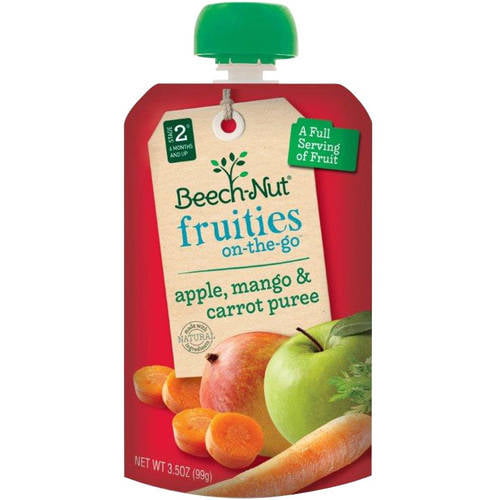
Nurture, Inc. (HappyBABY And Happy Family Organics)
Nurture regularly tests both ingredients and finished products for heavy metals, unlike the other baby food manufacturers in the Congressional Report.
But despite knowing that their finished products had high levels of heavy metals, Nurture continued to release them without any corrections. The company admitted that the heavy metal test results aren’t the basis for product release. (3)
Inorganic Arsenic:
- Up to 100 ppb (over 25% of Nurture finished baby products)
- Up to 160 (Strawberry & Beet Puffs)
- Up to 160 (Banana & Pumpkin Puffs)
- Up to 180 ppb (Apple & Broccoli Puffs)
Mercury:
- Up to 9.8 ppb (Banana Sweet Potato)
- Up to 10 ppb (Brown Rice Cereal Canister)
Lead:
- Up to 10 ppb (Nurture vegetables and rice products)
- Up to 560 ppb (Multi-Grain Cereal Canister)
- Up to 641 ppb (Blueberry Purple Carrot)
Cadmium:
- Up to 5 ppb (65% of Nurture products)
- Up to 36 ppb (Strawberry Raspberry)
- Up to 49 ppb (Multi-Grain Cereal Canister)
Hain Celestial Group, Inc.
 (Earth’s Best Organic)
(Earth’s Best Organic)Hain admitted that it doesn’t test for actual heavy metal content but only makes “theoretical calculations” from ingredient results. (3)
Inorganic Arsenic:
- Up to 309 ppb (ingredients)
- Up to 129 ppb (finished products)
Mercury:
- No test for mercury.
Lead:
- Up to 352 ppb (raw materials)
Cadmium:
- Up to 260 ppb (ingredients)
Campbell Soup Company (Plum Organics)
The company refused to provide the Subcommittee with their actual test results or internal standards, insisting that their finished products “meet criteria.” (3)
But data from Healthy Babies Bright Futures showed the following results for Just Sweet Potato Organic Baby Food: (5)
Mercury:
- Less than 0.
 142 ppb
142 ppb
Inorganic Arsenic:
- Up to 3.1 ppb
Lead:
- Up to 5.6 ppb
Cadmium:
- Up to 2.3 ppb
Walmart Inc. (Parent’s Choice)
Walmart also refused to submit results or internal standards to the Subcommittee. These are data from the Healthy Babies Bright Futures report: (5)
Inorganic Arsenic:
- Up to 108 ppb (Organic Strawberry Rice Rusks)
- Up to 56.1 ppb (Little Hearts Strawberry Yogurt Cereal Snack)
Mercury:
- Up to 2.05 ppb (Organic Strawberry Rice Rusks)
- Up to 0.941 ppb (Little Hearts Strawberry Yogurt Cereal Snack)
Lead:
- Up to 26.9 ppb (Organic Strawberry Rice Rusks)
- Up to 5.
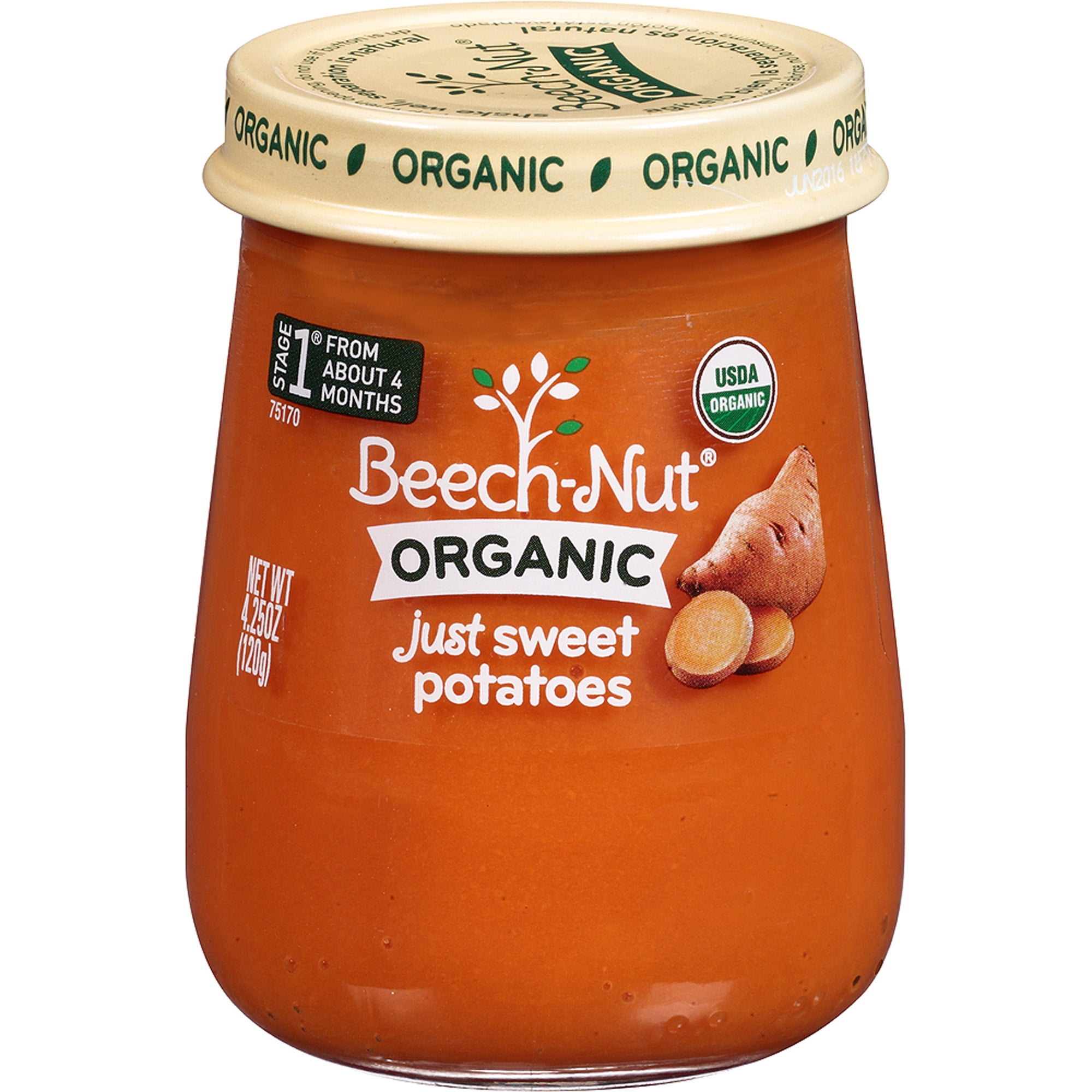 2 ppb (Little Hearts Strawberry Yogurt Cereal Snack)
2 ppb (Little Hearts Strawberry Yogurt Cereal Snack)
Cadmium:
- Up to 26.1 ppb (Little Hearts Strawberry Yogurt Cereal Snack)
- Up to 2.4 ppb (Organic Strawberry Rice Rusks)
Sprout Foods, Inc. (Sprout Organic Foods)
The company never responded to the Congressional Subcommittee. So, these results for Organic Quinoa Puffs Baby Cereal Snack – Apple Kale also come from the Healthy Babies Bright Futures report: (5)
Inorganic Arsenic:
- Up to 107 ppb
Mercury:
- Up to 1.31 ppb
Lead:
- Up to 39.3 ppb
Cadmium:
- Up to 41.5 ppb
Reducing Heavy Metals in Baby Food Products
Heavy metals could greatly affect the body and brain development of young children.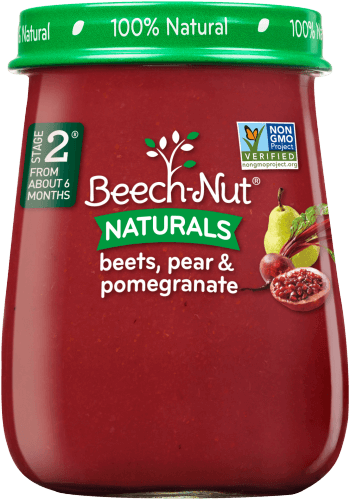 So, Consumer Reports, the US PIRG (Public Interest Research Group), and other concerned groups call for the approval of the Baby Food Safety Act of 2021. (6)
So, Consumer Reports, the US PIRG (Public Interest Research Group), and other concerned groups call for the approval of the Baby Food Safety Act of 2021. (6)
It will require baby food manufacturers to test and disclose their results to parents and regulators. It will also direct the FDA to create and implement stricter heavy metal limits for baby foods. (6)
In response to public outcry, the FDA announced its action plan called “Closer to Zero.” It aims to reduce toxic elements from foods of babies and young children by lowering the allowable limits. (7)
If implemented, this could lower the limit to 15 ppb for infant cereal and 10 ppb in other baby foods, as proposed by the Baby Food Safety Act. (4)
If that happens, then Beech-Nut will need to pull more products off the shelves. Because even the rice cereal samples (product code 193470XXXX; arsenic level 52.2 ppb) with the lowest inorganic arsenic content have at least three times the allowable limit. (4)
What Are The Healthiest Baby Food Brands?
The following may be healthier alternatives to the unsafe products in the report:
- Serenity Kids
- Yumi (subscription-based)
- Little Spoon (subscription-based)
- Once Upon A Farm
Preparing Healthier Alternatives At Home
You can also prepare fresh, organic baby foods at home using appliances you already have in your kitchen. Products like a Baby Brezza Small Baby Food Maker Set – Cooker and Blender can also help.
Products like a Baby Brezza Small Baby Food Maker Set – Cooker and Blender can also help.
But a blender or simple food processor will also do the trick. No need to buy any new gadgets.
You can prepare healthy, fresh baby food at home using:
- Whole or puréed vegetables and fruits
- Raw yogurt or coconut yogurt
- Quality meats, poultry, or fish
- Bone broth
- Healthy fats such as ghee, olive oil, or coconut oil
- Quinoa
- Eggs
- Oats
Although sweet potatoes and carrots can also have high lead and cadmium levels, they are also important sources of vitamin A and other nutrients. Include these in your child’s diet in moderate amounts. (5)
It’s also best to avoid using rice and rice flour because they might have high cadmium, lead, and arsenic levels. (5)
Was There A Recall On Baby Food In 2021?
Despite the Subcommittee report showing that several products had high levels of heavy metals, Beech-Nut only issued this cereal recall:
Beech-Nut Single Grain Rice Cereal
- Date Recalled: June 8, 2021
- Company Name: Beech-Nut
- Reasons For Recall: High arsenic levels
- Affected Products: UPC Code# 52200034705; Product codes 103470XXXX and 093470XXXX; Expiration date of 01MAY2022 (8)
- Return or Refund Processing: www.
 beechnut.com/ricecereal or 1-866-272-9417
beechnut.com/ricecereal or 1-866-272-9417
Statement from Jason Jacobs, Beech-Nut‘s vice president for food safety and quality: (9)
“The safety of infants and children is Beech-Nut’s top priority. We are issuing this voluntary recall because we learned through routine sampling by the State of Alaska that a limited quantity of Beech-Nut Single Grain Rice Cereal products had levels of naturally-occurring inorganic arsenic above the FDA guidance level, even though the rice flour used to produce these products tested below the FDA guidance level for inorganic arsenic.”
Baby Food Recall (News & Updates)
Lawsuit Filed Against Baby Food Companies
Update: March 10, 2023
A lawsuit was filed in Southern California against the baby food companies mentioned in the Congressional report over their possible links with autism and ADHD (attention-deficit/hyperactivity disorder).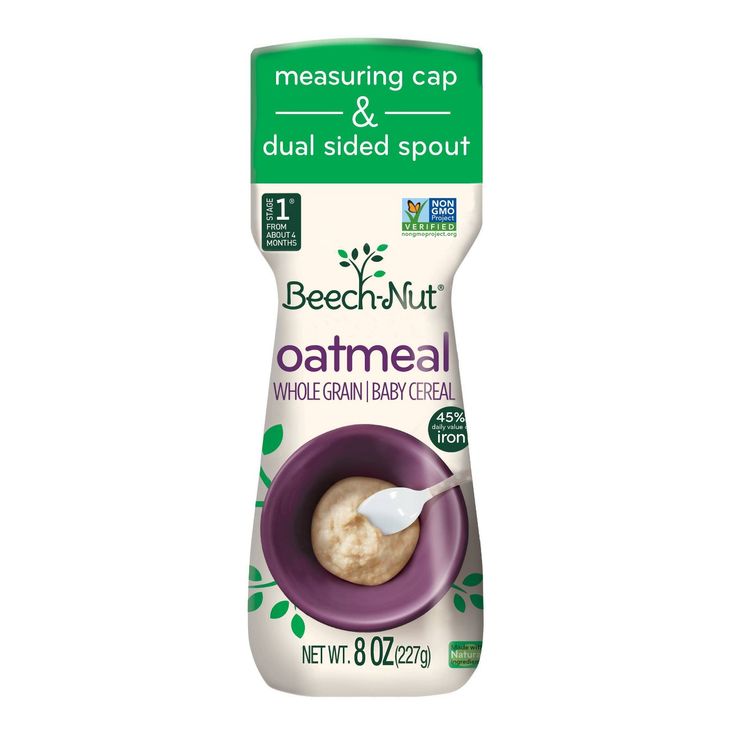 (10)
(10)
Experts invited by Attorney Pedram Esfandiary’s group explained to a judge that the heavy metals in these tainted foods can interact with the brain, resulting in these conditions. (10)
FDA Proposes New Food Safety Unit
Update: February 2, 2023
The FDA announces the plan to create the Human Foods Program, which is a new food safety unit that will focus on nutrition and ensuring the safety of the US food supply. (11)
The deputy commissioner for this new unit will have clear decision-making authority and will be tasked to improve US nutrition to address chronic diseases potentially caused by poor nutrition, explains FDA Commissioner Dr. Robert Califf. (11)
FDA Proposes New Limits On Lead In Baby Foods
The FDA also proposes lead level limits for baby food: (12)(13)
- Lower than 10 ppb (parts per billion) in most vegetables and fruits, yogurts, custards and puddings, meat, and mixed meals (e.
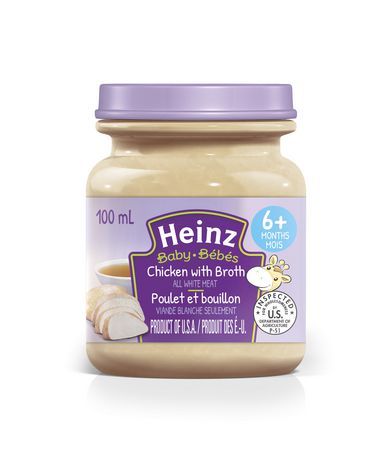 g., grain and meat-based mixtures)
g., grain and meat-based mixtures) - Maximum of 20 ppb in dry baby cereals and root crops (e.g., beets, sweet potatoes, and carrots) that grow underground and can absorb more lead from the soil
The FDA estimates that these new limits can reduce young kids’ dietary lead exposure by 24-27%.
However, baby food safety advocates (e.g., Consumer Reports and Healthy Babies Bright Futures) push for lower lead limits and for the FDA to include limits on the other heavy metals also found in baby food, including mercury and cadmium. (12)(13)
References
(1) https://pubmed.ncbi.nlm.nih.gov/23570911/
(2) https://www.ncbi.nlm.nih.gov/pmc/articles/PMC4418502/
(3) https://oversightdemocrats.house.gov/sites/democrats.oversight.house.gov/files/2021-02-04%20ECP%20Baby%20Food%20Staff%20Report.pdf
(4) https://oversightdemocrats.house.gov/sites/democrats.oversight.house.gov/files/ECP%20Second%20Baby%20Food%20Report%209.29.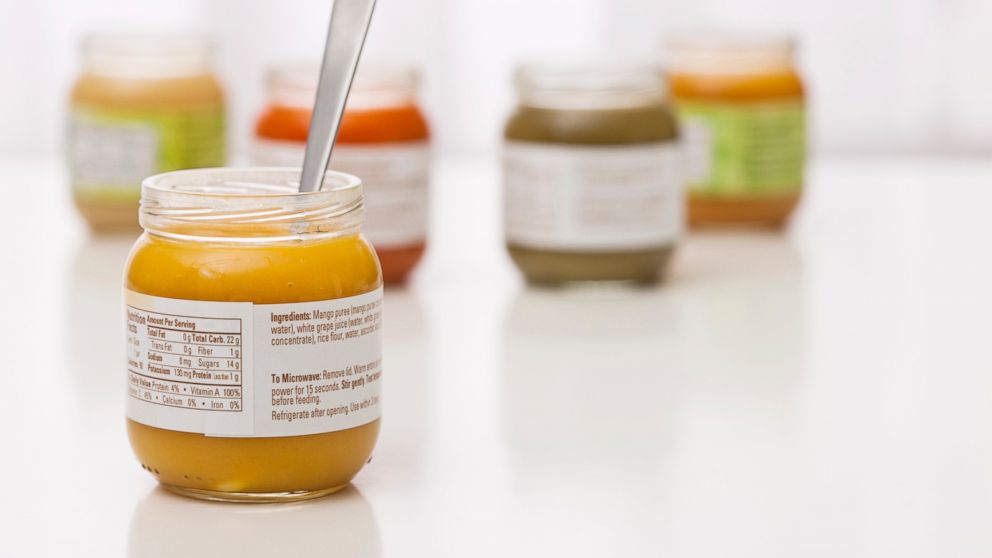 21%20FINAL.pdf
21%20FINAL.pdf
(5) http://www.healthybabyfood.org/sites/healthybabyfoods.org/files/2019-10/BabyFoodReport_FULLREPORT_ENGLISH_R5b.pdf
(6) https://www.usatoday.com/story/money/shopping/2021/06/09/beech-nut-baby-food-recall-2021-rice-cereal-arsenic/7621243002/
(7) https://www.fda.gov/food/cfsan-constituent-updates/fda-shares-action-plan-reducing-exposure-toxic-elements-foods-babies-and-young-children
(8) https://www.fda.gov/safety/recalls-market-withdrawals-safety-alerts/beech-nut-nutrition-company-issues-voluntary-recall-one-lot-beech-nut-single-grain-rice-cereal-and
(9) https://www.goodmorningamerica.com/wellness/story/beech-nut-stop-selling-specific-baby-rice-cereal-78196121
(10) https://fox17.com/news/spotlight-on-america/update-first-court-battle-over-toxic-metals-in-baby-food-set-for-trial-in-2023
(11) https://www.usnews.com/news/health-news/articles/2023-01-31/after-baby-formula-scandal-fda-announces-new-unit-focused-on-food-safety
(12) https://www. nytimes.com/2023/01/24/health/fda-lead-baby-food.html
nytimes.com/2023/01/24/health/fda-lead-baby-food.html
(13) https://www.consumerreports.org/babies-kids/baby-food/fda-proposes-new-limits-for-lead-in-baby-foods-a2167994237/
Beech-Nut Nutrition Company Issues a Voluntary Recall of One Lot of Beech-Nut Single Grain Rice Cereal and Also Decides to Exit the Rice Cereal Segment
COMPANY ANNOUNCEMENT
When a company announces a recall, market withdrawal, or safety alert, the FDA posts the company's announcement as a public service. FDA does not endorse either the product or the company.
Read AnnouncementView Product Photos
Summary
- Company Announcement Date:
- FDA Publish Date:
- Product Type:
- Food & Beverages
- Reason for Announcement:
-
Recall Reason Description
Presence of Inorganic Arsenic above Guidance Levels
- Company Name:
- Beech-Nut
- Brand Name:
-
Brand Name(s)
Beech-Nut
- Product Description:
-
Product Description
Stage 1, Single Grain Rice Cereal
Company Announcement
Beech-Nut Nutrition today has issued a voluntary recall of one lot of Beech-Nut Stage 1, Single Grain Rice Cereal.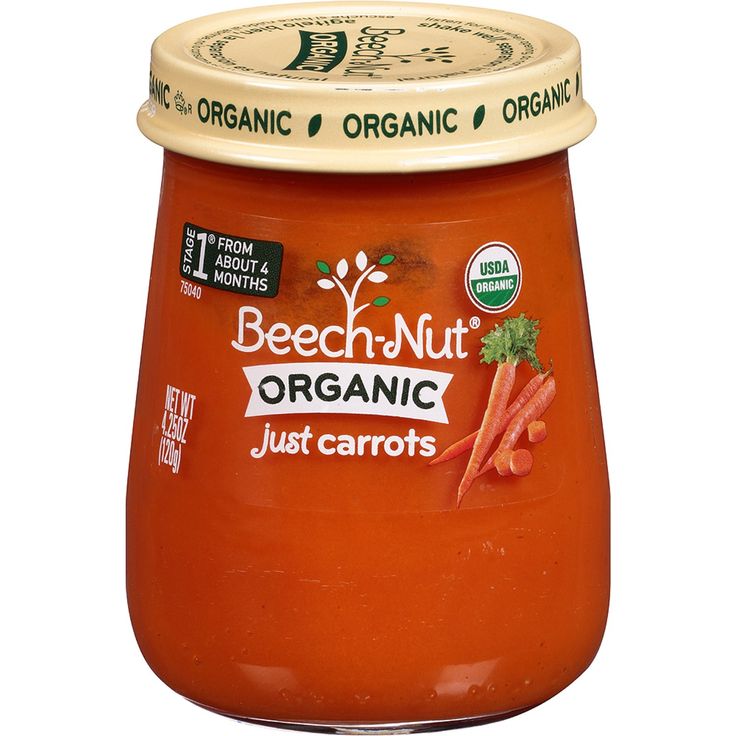 This recall is a result of a routine sampling program by the State of Alaska which found that samples from that production lot of Beech-Nut Stage 1, Single Grain Rice Cereal tested above the guidance level for naturally occurring inorganic arsenic set by the FDA in August 2020, though the rice flour used had been tested and confirmed as being below the FDA guidance level for inorganic arsenic.
This recall is a result of a routine sampling program by the State of Alaska which found that samples from that production lot of Beech-Nut Stage 1, Single Grain Rice Cereal tested above the guidance level for naturally occurring inorganic arsenic set by the FDA in August 2020, though the rice flour used had been tested and confirmed as being below the FDA guidance level for inorganic arsenic.
FDA has recognized that trace elements such as these are widely present in the environment, including water, soil and food; and has also stated that exposure to elevated levels of naturally occurring inorganic arsenic can pose a health hazard to young children.
The specific Beech-Nut Single Grain Rice item (UPC Code# 52200034705) being recalled has an expiration date of 01MAY2022 and product codes: 103470XXXX and 093470XXXX. The expiration date and product numbers can be found at the bottom of the Beech-Nut Single Rice Cereal canister. These specific product codes were distributed nationally through retail and online.
In addition to issuing the voluntary recall, Beech-Nut has also decided to exit the market for Beech-Nut branded Single Grain Rice Cereal. Beech-Nut is concerned about the ability to consistently obtain rice flour well-below the FDA guidance level and Beech-Nut specifications for naturally occurring inorganic arsenic.
"The safety of infants and children is Beech-Nut's top priority. We are issuing this voluntary recall, because we learned through routine sampling by the State of Alaska that a limited quantity of Beech-Nut Single Grain Rice Cereal products had levels of naturally-occurring inorganic arsenic above the FDA guidance level, even though the rice flour used to produce these products tested below the FDA guidance level for inorganic arsenic," said Jason Jacobs, Vice President, Food Safety and Quality.
No illnesses related to these product codes have been reported to date, and no other production dates or Beech-Nut products are affected by this recall.
Consumers who may have purchased Beech-Nut Rice Cereal with product codes: 103470XXXX and 093470XXXX with expiration of 01MAY2022 should discard the product. They can also go to www.beechnut.com/ricecereal, or call 1-866-272-9417, Monday through Friday 8:00 a.m. to 8:00 p.m. for further information on obtaining an exchange or refund.
They can also go to www.beechnut.com/ricecereal, or call 1-866-272-9417, Monday through Friday 8:00 a.m. to 8:00 p.m. for further information on obtaining an exchange or refund.
Company Contact Information
- Consumers:
- Beech-Nut
- 1-866-272-9417
- Media:
- [email protected]
Product Photos
More Recalls, Market
Withdrawals, &
Safety Alerts
Beech nuts - properties, benefits, contraindications
02/05/2016
How to counter the ubiquitous products "enriched" with preservatives, thickeners or artificial colors? Take a walk for provisions ... into the forest.
Among the many gifts from the forest, one can also find beech nuts, which are perfectly acceptable for use in the kitchen. They are an interesting addition to cakes, desserts, salads, and also act as the main component of a fragrant tincture.
They are an interesting addition to cakes, desserts, salads, and also act as the main component of a fragrant tincture.
- Are beech nuts edible?
- Health benefits of beech nuts
- On a toxic substance in beech fruits
Are beech nuts edible?
The common beech is a very common tree in European forests. It begins to bloom only after reaching 60-80 years of age. Every 5-8 years, the beech abundantly “produces” thorny fruits, which fall to the ground from September to November, releasing nuts hidden inside - a favorite delicacy of wild boars, roe deer, deer, squirrels and many species of birds.
Beech nuts, slightly reminiscent of hazelnuts or walnuts, have been enjoyed by people for many centuries. They were enjoyed by the ancient Greeks. The ancient inhabitants of Scandinavia baked bread from ground beech nuts mixed with flour. The French steamed them and made a drink that served as an alternative to black coffee. In Germany, beech seed oil is still very popular, which is added with pleasure to various dishes. Once margarine was obtained from them, which replaced the more expensive and difficult to produce butter. The nuts of the American beech - a "relative" of the common beech - were also highly valued by the Indians. They ate them fresh and dried, cooked with various vegetables and fruits.
Once margarine was obtained from them, which replaced the more expensive and difficult to produce butter. The nuts of the American beech - a "relative" of the common beech - were also highly valued by the Indians. They ate them fresh and dried, cooked with various vegetables and fruits.
What are the benefits of beech fruit?
People who have ever eaten beech nuts pay special attention to their oiliness. This is hardly surprising, since fruits can contain up to 50% of various fatty substances. First of all, these are unsaturated fatty acids, which easily combine with cholesterol, provoking a decrease in its concentration in the blood, and also increase the body's resistance.
Beechnuts are a rich source of proteins, carbohydrates, trace elements (calcium, phosphorus, magnesium) and B vitamins, which are responsible for the efficiency of the nervous system, give energy, regulate metabolic processes, take care of heart health, skin and hair condition.
In beech fruits, you can also find many organic acids (in particular, coumaric, vanilla, ferulic, malic and citric), as well as saponins, which accelerate the digestion of fats, have anti-inflammatory, bactericidal and diuretic effects.
How can beech nuts be harmful?
The forest delicacy also supplies the body with many substances that are much less beneficial to health. First of all, it is oxalic acid. Its excess weakens teeth and bones, favors the formation of kidney stones, especially in people who have problems with the urinary system.
The second, to put it mildly, not the most useful substance is fagin, an alkaloid that is poisonous in large quantities and causes hallucinations. Also "on his conscience" may be headaches, vomiting, nausea, convulsions and a decrease in body temperature. So beech nuts should be eaten in moderation.
Related articles
Annex 1. List of food products subject to the 10 percent value added tax rate
Cattle and Bird Bellywood
Codes of goods in accordance with HDEC CIS:
0101,
0102,
0103,
0104,
0105,
9000 00meat and meat products
commodity codes in accordance with the CIS FEACN:
0201 10 000 (except veal),
0201 20 (except veal),
0201 30 000 (except tenderloin <3>),
0202 10 (except) veal ,
0202 20 (except veal),
0202 30 (except for the notch <3>),
0203 11 - 0203 19 150,
0203 19 550 (except for the notch <3>),
0203 19 590,
0203 19 900 (except for the cutting <3 >),
0203 21 - 0203 29 150,
0203 29 550 (except for the cutting <3>),
0203 29 590,
0203 29 900 (except for the cutting <3>),
0204 10 000 000 - 0204 22 900,
0204 23 000 (except cutout <3>),
0204 30 000 - 0204 42 900,
0204 43 (except for the cutting <3>),
0204 50 110 - 0204 50 310,
0204 50 390 (except for the cutting <3>),
0204 50 510 - 0204 50 710,
0204 50 790 (except for the notch <3>),
0205 00 (except for the cutting <3>),
0206 10 910,
0206 10 950,
0206 10 990 <4>,
0206 22 900,
0206 29 910,
0206 29 990 <4>,
0206 30 210,
0206 30 310 <4>,
0206 30 900 <4>,
0206 41 910,
0206 41 990,
0206 49 910 <4>,
0206 49 990 <4>,
0206 80 910 <4>,
0206 80 990 <4>,
0206 90 910 <4>,
0206 90 990 <4>,
0207,
0208 <4>,
0209 00 110,
0209 00 190 (except smoked ),
0209 00 300,
0209 00 900,
0210 11 110,
0210 11 190,
0210 11 310 (except smoked),
0210 11 390 (except smoked),
0210 11 900 (except smoked),
0210 12 110,
0210 12 190 (except smoked) ,
0210 12 900 (except smoked),
0210 19 100 - 0210 19 590,
0210 19 600 - 0210 19 890 (except smoked),
0210 19 900 (except smoked),
9000 0210 20 ( except smoked),0210 90 100,
0210 90 110 (except smoked),
0210 90 190 (except smoked),
0210 90 210,
0210 90 290,
0210 310,
0210 90 390 <4>
0210 90 410,
0210 90 490 >,
0210 90 600 <4>,
0210 90 710,
0210 90 790,
0210 90 800 <4>,
0210 90 900,
of 1502 00 900 (food),
out of 1506 00 000 (animal fats and oils, edible),
1601 00 100,
1601 00 910 (except raw smoked premium, raw smoked semi-dry premium,
dry-cured, stuffed premium), v/s),
1602 10 000,
1602 20,
1602 31,
1602 32,
1602 39,
1602 41 (except for beam, carbonate, ham, pastro, fille,
canned food bacon, chop, ham),
9
1602 49 (except balyk, carbonade, ham, pastrami, canned bacon, carbonade, ham) Vetchins),
1602 50 (except for the ham),
1602 90,
1603 00,
2104 10
Milk and milk products
Codes of goods in accordance with HDE CIS:
0401 - 0406,
222 2106 90 100
Eggs and egg products
Codes of goods in accordance with HD CIS TTE:
0407 00,
0408
Vegetable oil
Codes of goods in accordance with the CIS TNE:
1507 10 900,
1607 90 900 900,
1508 10 900,
1508 90 900,
1509 (except 1509 10 100),
1510 00,
1511 (except 1511 10 100, 1511 90 910),
1512 (except 1512,100, 1512 19 100, 1512 21 100, 1512 21 900,
1512 29 100),
1513 (except 1513 11 100, 1513 19 300, 1513 21 110, 1513 21 1903
1513 29 300),
1514 10 900,
1514 90 900,
1515 (except 1515 19 100, 1515 21 100, 1515 29, 1515 30,
1515 40 000, 1515 50 110, 1515 50 910, 1515 60, 1515 90 100 - 1515
90 400, 1515 90 600),
1516 20 910,
1516 20 980
Margarine0003
1208,
2304 00 000,
2305 00 000,
2306
Bread and bakery products (including bakery, dry and
lamb)
Codes of the CIS:
1904, 1904, 1904, 1904,
1905 10 000,
1905 40,
1905 90 100,
1905 90 300,
from 1905 90 600 - Bakery
of 1905 90 900 - Bake products
Croops
Codes in accordance with the TN VED CIS:
1006 40 000,
1103,
1104
Film
Codes of goods in accordance with HDEC CIS:
1101 00,
1102,
1106 10 0002 1106 20 900 900 900 900 900 900
222 1107 10 110,
1107 10 910,
1107 20 000,
1208,
out of 2106 10 - Textured flour
Macaron products
Codes of goods in accordance with the HDEC CIS:
1902 9000 9000
Live -live fish live
Codes of goods in accordance with the HD CIS TNE:
0301 (except 0301 10)
Sea and Fish products
Codes of goods in accordance with HDECs of the CIS:
0302 11,
0302 12 000 12 000 12 000 ,
0302 19 000 (except for Belarusian, salmon of the Baltic, salmon),
0302 21 - 0302 69 110,
0302 69 190 (except Beluga, Bester, sturgeon, stem, sterlet),
0302 69 210 - 0302 - 0302 69 990,
0302 70 000 (except sturgeon and salmon caviar),
0303 10 000,
0303 21,
0303 22 000 (except for salmon),
0303 29 000 (except for Belarusia, Baltic salmon),
0303 31 - 0303 79 110,
0303 79 190 (except for Beluga, Bester, Sturgeon, sturgeon, stellate, sterlet),
0303 79 210 - 0303 79 960,
0303 80 000 (except for sturgeon and salmon fish caviar),
0304 10 110,
0304 10 130 (except fillet of salmon),
0304 10 190 (except fillet of white salmon, Baltic salmon, salmon,
Beluga, Bester, sturgeon, stem, sterlet),
0304 10 310 - 0304 10 350,
0304 10 380 (except for Belarusia, Baltic salmon, salmon),
0304 10 910 (except for Belouda, Bester, Bester sturgeon, sturgeon, sterlet),
0304 10 940,
0304 10 950,
0304 10 960,
0304 10 980 (except for Belarusia, Baltic Halls, Semgi),
0304 20 110,
0304 20 130 (except salmon fillet),
0304 20 190 (except fillet of white salmon, Baltic salmon, salmon,
Bester, sturgeon, sturgeon, stem, sterlet, beluga),
0304 20 210 - 304 20 910,
0304 20 960 (except for Belarusia, salmon of the Baltic, salmon),
030 050 050,
9000 0304 90 100 (except for Beluga, Bester, Sturgeon, sturgeon, stellate, sterlet),0304 90 200 - 0304 90 650,
0304 90 970 (except for Belarusian, Baltic salmon, salmon),
0305 10 000,
9000 0305 20 000 ( except for sturgeon and salmon caviar), 0305 30 110.
0305 30 190,
0305 30 300 (except for salmon fillets, keta, chavschi),
0305 30 500,
0305 30 900 (except for Belarusia, Baltic Slabsia, Semgi,
Beluga, Beluga, Stain stellate sturgeon, sterlet, chum salmon, chinook salmon),
0305 41 000 (except salmon, chum salmon, chinook salmon, coho salmon),
0305 42 00 - 0305 49 500, ,
bester, sturgeon, stellate sturgeon, sterlet, nelma, chum salmon, chinook salmon, coho salmon,
Muksun, Omulya, Siga of Siberian and Amursky, Chira),
0305 51 100 - 0305 59 700,
0305 59 900 (except for Belarusia, Baltic salmon, salmon, Beluga,
Bester, sturgeon, stittering, sterlet, sterlet, sterlet, sterlet. Keta, chavschi),
0305 61 000 - 0305 69 300,
0305 69 500 (except for preserves from Pacific salmon, salmon,
Keta, chavchi),
0305 69 900 (except for Belarusia, Baltic Sormation, Semi, Semi, Semi, Semi, Semi beluga,
bester, sturgeon, stellate sturgeon, sterlet, chum salmon, chinook),
0306 (except 0306 11, 0306, 0306 21 000, 0306 24),
0307,
1603 00,
1604 11 000 (except for salmon of the Baltic and Far Eastern),
1604 12 - 1604 16 000,
1604 19 100 (except for Belarusian, Semi, Keta, Chavichi),
1604 19 310,
1604 19 390,
1604 19 500,
1604 19 910 (except for Beluga fillet, Bester, sturgeon, storage
sterlet),
1604 19 920 - 1604 19 950.
1604 19 980 (except for Beluga, Nonster, Sturgeon, Sorotui, Sterlad),
1604 20 050,
1604 20 (except for Baltic and Far Eastern salmon),
1604 20 300 (except for Belarusian, Semi, Keta, Keta, Keta Chavichi),
1604 20 400 - 1604 20 700,
1604 20 900 (except Beluga, Bester, sturgeon, stem, sterlet),
1604 30 900 (except for the caviar of salmon fish),
1605 20,
1605 30 000,
1605 40 000 (excluding lobsters),
1605 90,
2104 10
products of children's and diabetic nutrition
Codes of goods in accordance with HDEC CIS:
of 1602 10 000 - baby food,
of 1702 - Diabetic nutrition,
of 1806 31 000 - 1806 32 - diabetic food,
out of 1806 90 310 - 1806 90 900 - diabetic food,
out of 1901 - baby food,
out of 1905 - diabetic food,
out of 2005 - 100.05 - baby food0003
from 2007 10 - baby food,
from 2007 91 - 2007 99 - diabetic food,
from 2009 - baby and diabetic food,
from 2104 20,000 - baby food and diabetic food,
and 20003 (except chewing gum
based on sweeteners),
out of 2202 - baby and diabetic food,
out of gr. 29 - sweeteners for people with diabetes
29 - sweeteners for people with diabetes
Vegetables and their processed products
Codes of goods in accordance with the HDEC CIS:
0702 00 - 0714,
1212 91,
2001,
2002,
2003,
2004 (except 2004 10),
2005 (except 2005 (except for 2005 20),
2008 99 850,
2008 99 910,
from 2008 99 990 - Vegetables, including vegetable mixtures,
2009 50,
from 2009 80 - 2009 90 - vegetable juices and mixtures of vegetable juices,
2103 10,000,
2103 20,000,
out of 2103 90 900 - vegetable sauces, products for preparing vegetable
sauces, vegetable flavorings,
out of 2202 - vegetable drinks
Potatoes and potato products
commodity codes in accordance with the CIS FEACN:
0701, 9005 ,
1105,
1108 13 000,
2004 10,
2005 200003
Wild fruits, berries, nuts <5>
Codes of the CIS FEA:
of 0802 21 000 - wild -growing nuts (hazel),
Of 0802 40 000 - wild chestnuts,
of 0802 90 500 - wild cedar nuts,
of 0802 90 850 - Book nuts,
of 0804 20 100 - wildcard,
of 0806 10 930 - 0806 10 10 - 0806 10 10 10 - 0806 10 10 - 0806 10 10 - 0806 10 10 970 - Wild grapes,
of 0808 10 100 - wild apples,
of 0808 10 590 - Dichka apples,
of 0808 10 690 - apples Dichka,
of 0808 10 790 - apples Dichka,
of 0808 10 980 - wild apples,
from 0808 20 100 - 0808 20 670 - wild pear,
of 0808 20 900 - Aiva Dichka,
of 0809 20 190 - Wild cherries,
of 0809 20 290 - wild cherries,
of 0809 20 390 - Blood Boars,
of 0809 20 490 - Wild Coars, Cherry, Cherry, Coars
of 0809 20 590 - Wild cherries,
of 0809 20 690 - Wild cherries,
of 0809 20 790 - wild cherries,
of 0809 40 900 - wild Tern,
of 0810 10 - wild strawberries and strawberries ,
out of 0810 20 100 - wild raspberries,
out of 0810 20 900 - here (mulberry),
out of 0810 20 900 - wild blackberry,
out of 0810 30 100 - wild currant (except for Ussuri),
of 0810 30 900 - wildcurrant (except Ussuri),
of 0810 30 900 - wild gooseberries,
0810 40 - lingonberry,
0810 40 300 - blueberries,
0810 40 500 - cranberries,
out of 0810 40 900 - wild blueberries,
out of 0810 90 850 - wild-growing actinidia, cherry plum, barberry, cloudberry, medlar, sea buckthorn, mountain ash, bird cherry,
wild rose,
2308 10 000 - acorns and horse chestnut
5 N 1120 "On food products for which a value-added tax rate of 10 percent is applied", dated 18. 07.96 N 849 "On amendments to the list of food products for which a value-added tax rate of 10 percent is applied" and dated March 11, 1997 N 276 "On the introduction of additions to the list of food products for which a value-added tax rate of 10 percent is applied, approved by the Decree of the Government of the Russian Federation of November 13, 1995 N 1120".
07.96 N 849 "On amendments to the list of food products for which a value-added tax rate of 10 percent is applied" and dated March 11, 1997 N 276 "On the introduction of additions to the list of food products for which a value-added tax rate of 10 percent is applied, approved by the Decree of the Government of the Russian Federation of November 13, 1995 N 1120".
<2> For the purposes of this Appendix, goods are determined solely by the product code according to the CIS FEACN, the short name of the goods is given only for convenience. This note does not apply to cases where there is an indication that the corresponding
<3> Tenderloin - lumbar-iliac muscle of oval-oblong shape, partially covered by a shiny tendon, without adjoining psoas minor, connective and adipose tissue (OST 49208-84 "Semi-finished natural meat products. Specifications.").
<4> Edible by-products are distinguished in the indicated headings of the FEACN of the CIS, including: heads, both whole and chopped (including ears), legs, tails, heart, udder, liver, kidneys, "sweet meat" (thymus gland and pancreas gland), brains, lungs, pharynx, thin and thick diaphragms, spleen, greater omentum, spinal cord, edible skin, reproductive organs (uterus, testicles, ovaries), pituitary gland, thyroid gland.










